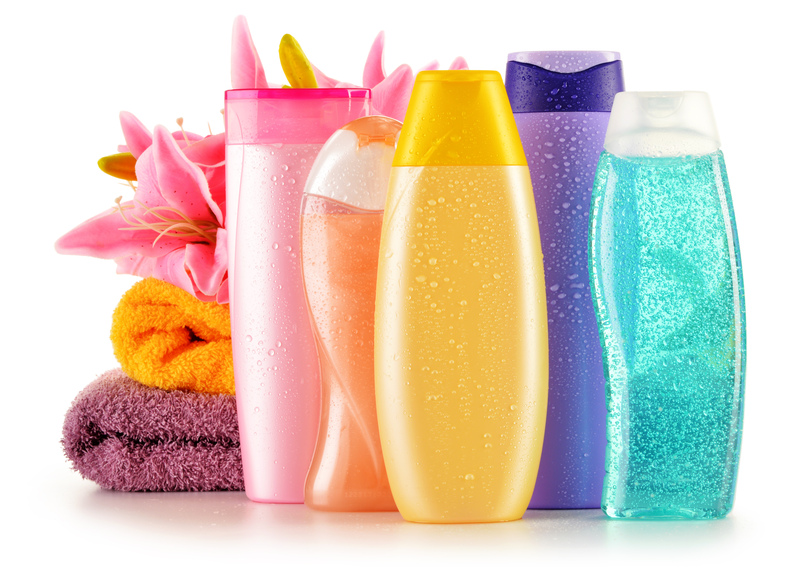Secrets to Keeping Your Bathroom Mold-Free
Posted on 19/09/2025
Secrets to Keeping Your Bathroom Mold-Free
Maintaining a mold-free bathroom can seem like an ongoing battle. Warm temperatures, humidity, and moisture from daily routines make bathrooms the ideal breeding ground for mold and mildew. Fortunately, with the right combination of habits, tools, and awareness, you can effectively prevent bathroom mold and keep your space fresh, healthy, and inviting.

Why Is Mold Prevention in Bathrooms So Important?
Mold does more than mar your tiles and caulking. Bathroom mold problems can contribute to unpleasant odors, damage surfaces, and even compromise your health. People with allergies or respiratory issues are particularly vulnerable. Mold spores can lead to:
- Increased allergy symptoms and respiratory distress
- Headaches and sinus problems
- Fungal infections
- Unpleasant musty smells
- Damage to grout, drywall, and wooden structures
Preventing mold growth in the bathroom protects both your family's well-being and your property's value.
Understanding What Causes Mold in Bathrooms
Before uncovering the top secrets to keeping bathrooms mold-free, it's wise to understand what causes mold in bathrooms:
- Moisture: Showers, baths, and sinks all introduce water and humidity.
- Poor ventilation: Steam gets trapped without proper air circulation.
- Organic material: Dust, soap scum, and body oils are food sources for mold.
- Leaking pipes and fixtures: Slow leaks provide constant dampness.
A mold-free bathroom starts by controlling these conditions. Let's look at the best bathroom mold prevention tips that really work.
Proven Secrets to Keeping Your Bathroom Mold-Free
1. Maximize Ventilation Daily
The number one secret to keeping your bathroom mold-free is ventilation. After a shower or bath, steam increases humidity and moisture, which turn your bathroom into an ideal environment for mold to flourish.
- Use the exhaust fan: Switch on your bathroom fan whenever you bathe--and leave it running for at least 30 minutes after to remove moisture from the air.
- Open windows and doors: If possible, open a window or the bathroom door to improve air exchange.
- Install a quality exhaust fan: Make sure your fan is appropriately sized for your bathroom and vents to the outdoors--not into your attic.
For best results, consider upgrading your exhaust fan to a model with a built-in humidity sensor--this will automatically run as needed to prevent excess moisture.
2. Control Humidity Levels
Humidity is one of the key triggers of bathroom mold growth. Ideally, keep humidity levels in your bathroom under 50%. You can do this by:
- Using a portable dehumidifier: Especially helpful in bathrooms without windows or with high moisture issues.
- Wiping down wet surfaces: After every shower or bath, quickly dry tiles, mirrors, counters, and floors.
- Fixing leaks promptly: Check under sinks, behind toilets, and around the tub for any signs of dampness.
You can also use a hygrometer to monitor humidity levels in your bathroom for added peace of mind.
3. Clean and Disinfect Regularly

Mold spores can survive harsh environments and quickly rebound if not thoroughly cleaned. One of the best bathroom mold cleaning tips is to establish a regular cleaning schedule:
- Scrub tiles and grout: Pay extra attention to corners and grout lines. Use a brush and a mixture of water and vinegar or a commercial mildew cleaner.
- Disinfect shower curtains and liners: Wash or replace regularly to prevent buildup of soap scum and mildew.
- Clean bathroom mats: Launder rugs and mats frequently; damp fabric is a prime mold haven.
- Wipe surfaces: Clean counters, handles, faucets, and light switches with a disinfectant wipe weekly.
Don't forget often-missed spots such as behind toilets, under sinks, and inside medicine cabinets.
4. Use Mold-Resistant Materials
Renovating? Prevent bathroom mold before it starts by selecting building materials designed to resist fungi and moisture:
- Mold-resistant drywall (greenboard): Especially important for shower areas and walls near water sources.
- Mildew-resistant paint: Specially formulated paints are available for bathrooms and high-moisture areas.
- Grout sealant: Reseal tile grout annually to prevent water from seeping through cracks.
- Waterproof caulk: Replace cracked or deteriorated caulking around tubs and sinks regularly.
These materials won't eliminate the need for cleaning and ventilation--but they do provide an added layer of protection against mold growth.
5. Address Plumbing Issues Immediately
A trickle under the sink, a leak around the faucet, or a running toilet--these can all contribute to constant dampness and persistent bathroom mold problems. The best way to keep your bathroom mold-free is to fix leaks as soon as you notice them:
- Inspect pipes and connections regularly for leaks or corrosion.
- Ensure toilets, tubs, and sinks are properly caulked and sealed.
- Replace washers and gaskets as needed to prevent slow leaks.
If you're not comfortable tackling plumbing repairs yourself, call a licensed plumber to address the issue promptly.
6. Store Items Properly
Certain bathroom items, such as loofahs, bath toys, and sponges, can harbor both mold and bacteria when left damp. To keep your bathroom mold-free:
- Hang towels and washcloths so they dry fully between uses.
- Use ventilated storage racks instead of baskets that trap moisture.
- Store toiletries in closed cabinets when possible.
- Replace items like loofahs and sponges every month.
This will help minimize the spread of mold spores and keep surfaces clean.
7. Let in Natural Light
Mold thrives in dark, damp environments. Whenever possible, let natural sunlight into your bathroom. Sunlight is a natural disinfectant and helps keep moisture in check.
- Open blinds or curtains during the day.
- Consider adding a window or skylight if you're planning a renovation.
If your bathroom has no natural light, install bright LED lighting fixtures to help keep the space dry and bright.
8. Address Shower and Bath Area Specifically
Shower stalls and bathtubs are notorious for moisture build-up. Pay extra attention to mold prevention in these zones:
- Use a daily shower spray: These sprays help break down soap scum and prevent mildew from taking hold.
- Squeegee after showers: Dry tiles and glass doors to prevent moisture from lingering.
- Clean shower doors and curtains weekly: Pay close attention to bottom folds where water collects.
- Fix cracked tiles and grout promptly: Water can seep into wall cavities and create hidden mold issues.
By giving a little extra care to these areas, you'll drastically reduce your bathroom mold risk.
9. Upgrade Your Fixtures
Modern plumbing fixtures often come with features designed to minimize standing water and moisture retention. When replacing or renovating, choose:
- Faucets and showerheads with quick-dry or anti-limescale finishes.
- Wall-mounted sinks and toilets: Easier to clean underneath and less likely to trap dampness.
- Glass shower doors: Less likely to retain moisture than curtains.
Quality fixtures not only make your bathroom more stylish but also help to keep bathrooms mold-free.
Extra Tips and Tricks for a Mold-Free Bathroom
- Keep clutter to a minimum: Fewer items = fewer spots for mold to hide.
- Seal grout annually: Grout is extremely porous and can trap moisture.
- Vacuum vents: Clean the bathroom exhaust vent cover to ensure it's working optimally.
- Monitor for mold: Check behind mirrors, under the sink, and inside cabinets regularly.
- Consider a moisture-absorbing product: Silica gel, DampRid, or similar products can help absorb excess humidity.
Natural Remedies and Green Cleaning Solutions
Many homeowners prefer eco-friendly solutions for bathroom mold prevention. Here are some natural alternatives you can use:
- White vinegar: Spray undiluted vinegar onto problem areas, let sit for an hour, then scrub and rinse.
- Baking soda: Mix with water to form a paste and scrub moldy surfaces.
- Hydrogen peroxide: Use a 3% solution in a spray bottle for disinfecting tiles and grout.
- Tea tree oil: Add 2 teaspoons of oil to 2 cups of water; spray and leave to air-dry.
Important: Always test natural remedies on a small, hidden area first to check for any reactions with surfaces.

Mold Warning Signs: When to Call a Professional
Despite your best efforts, some mold infestations are beyond a simple cleaning. If you notice any of these warning signs, it may be time to contact a professional bathroom mold removal service:
- Large patches of mold that keep returning, even after cleaning
- Mold behind drywall, under flooring, or in ventilation ducts
- Strong, persistent musty odor
- Water damage stains that grow or spread
- Health issues worsen when using the bathroom
Professional remediators have specialized equipment and techniques to safely remove and prevent mold growth at the source.
Conclusion: Your Path to a Mold-Free Bathroom
A clean, mold-free bathroom isn't just a dream - it's entirely possible with the right approach and habits. By maximizing ventilation, controlling humidity, cleaning regularly, and investing in mold-resistant materials, you'll drastically reduce your risk of mold problems. Be proactive and vigilant, and your bathroom will remain fresh and healthy for years to come.
Start applying these secrets today and discover how a little effort can make a big difference in both the appearance and health of your home's bathrooms. By keeping mold at bay, you'll enjoy a cleaner, safer, and more enjoyable sanctuary every single day!
If you found these tips helpful, share this article with friends and family, and leave a comment below with your favorite bathroom mold prevention secrets!




